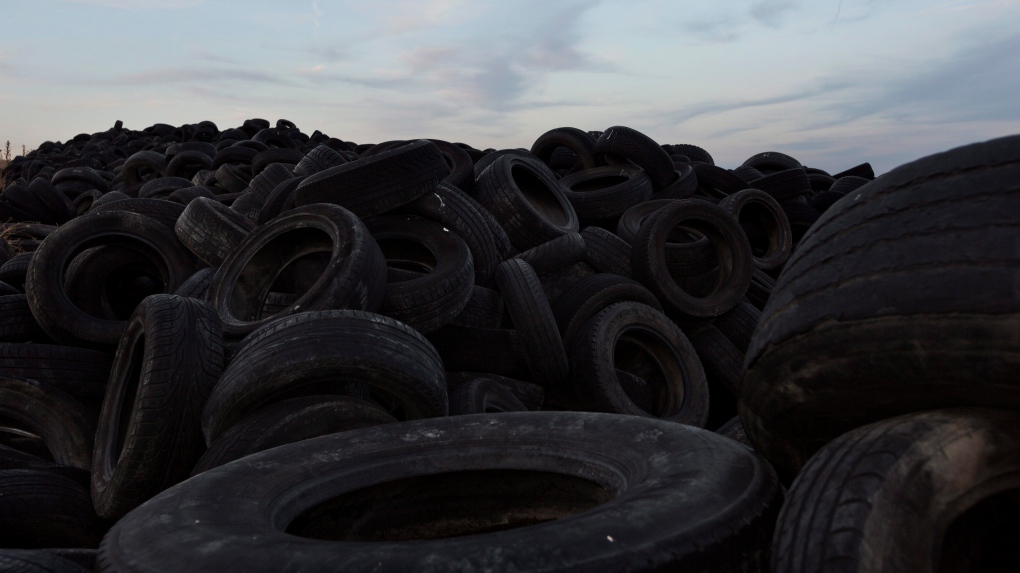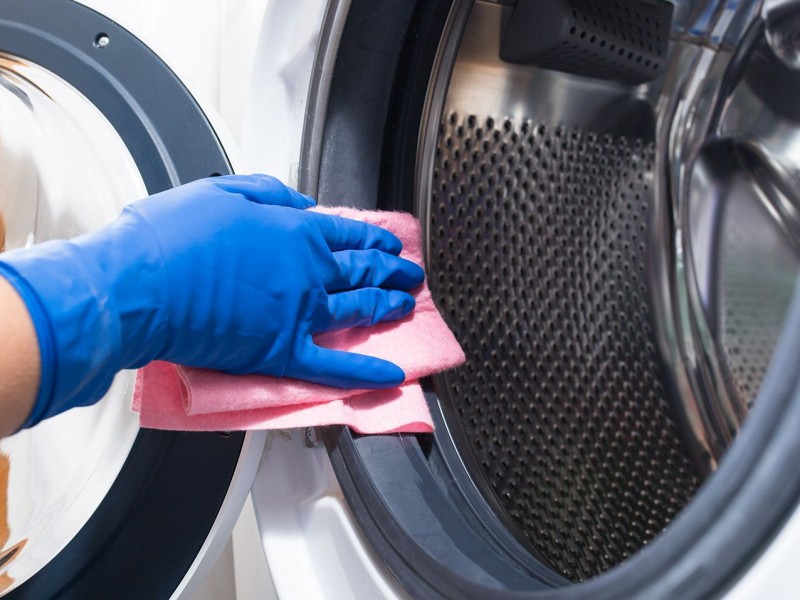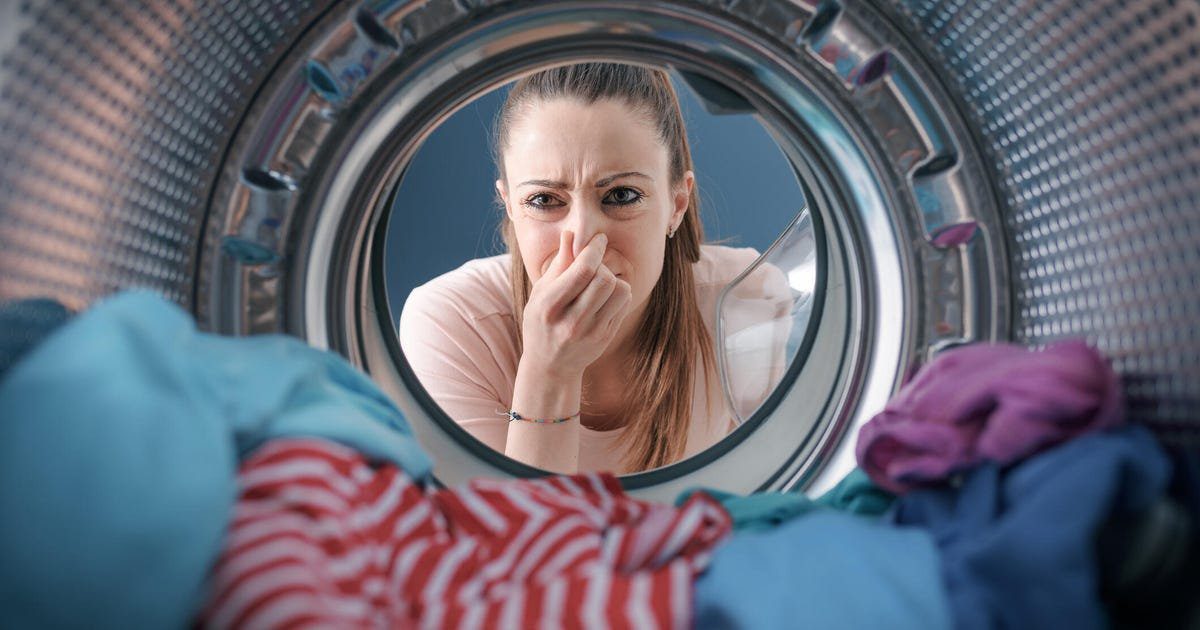5 solutions against mold hiding in your washing machine
Over time, moisture inside your washing machine can get trapped in hard-to-reach places and can easily become a breeding ground for mold. Sealers and diffusers are a few areas that you probably don’t check when cleaning your machine, but these same areas are the worst places for mold because they often don’t dry properly after a wash cycle. Combine the trapped moisture with the moisture in the laundry room and you’ll have an ideal environment for mold growth.
Even if you can’t see it, mold can easily stick to clothes and cause respiratory problems such as sneezing, coughing, and wheezing. It can cause fever in the body. Although these symptoms are not pleasant, the consequences can be more serious for those who are more sensitive, such as children, the elderly, or those with respiratory problems. To keep your lungs happy and your clothes clean, try these five washing machine mold control solutions.
1. Clean the machine regularly and air dry the washing machine
You may have tried this method before, but the key to cleaning your washer is cleaning hidden areas that you wouldn’t normally think of cleaning. Remove soap, bleach, and fabric softener to clean individually and to clean areas where they fit. Clean the inside of the drum with a rag or brush and an antimicrobial cleaning spray, paying special attention to the rubber seals of the front loading washers and the door flange of the top loading washers.
After you’ve scrubbed the front and inside of the washer, check the hose in the back and make sure no mold buildup on the hose connections. After cleaning, carefully dry each part and make it a habit to allow enough time to air dry after each wash. A towel or rag can help dry out the parts you can reach, but for best results, leave the pillow open to air, paying special attention to areas with poor airflow. If the appliance is dried properly after each cycle, mold will not have the right environment to grow.
2. Pay attention to the problem areas of the machine
In the case of front-loading washers, mold problems frequently occur inside the washer door rubber seal, but top-loading washers also have their own problems. Top loading models often have a metal rim on the door, which is often overlooked when cleaning. The lip on the underside of the washer is also missing when cleaning the washer.
However, the front loaders do deserve some of the criticism they’ve received. The sealant on front loading machines seals off the water during the wash cycle, but if not washed and dried properly, it retains moisture for much longer than any other part of the machine. This design provides an ideal environment for mold growth, so thorough air drying is critical.
3. Remove unwanted odors
If you’ve had a problem with mold in the past, or if your appliance has a buildup of hair, soap, and dirt, it may smell bad. To deodorize and sterilize the machine, first carefully clean the machine to remove residual particles from hard-to-reach crevices before sterilizing the machine. This is an important step because you will still smell the device if you don’t remove the source first.
Next, set the washing machine to the highest setting and add bleach directly to the drum, four cups of a front-loading washer or two cups of a top-loading washer. Start the cycle, let the tub fill up and mix the bleach agitator into the water. At this point, stop the cycle and leave the bleach solution in the washing machine for half an hour before resuming the cycle. After the cycle is complete, run the appliance through a rinse cycle to remove all traces of bleach, then repeat these steps using four cups of regular white vinegar in place of the bleach. This should remove any unwanted odors and kill any hidden bacteria or mold.
4. Use laundry detergent to remove mold
When you’re preparing your next load of laundry, it takes almost no time to add a small amount of laundry detergent to your clothes, yet this simple step can save your lungs from inhaling harmful mold spores. Laundry additives like EC3 use antimicrobial ingredients like tea tree oil to remove mold spores from your washer and clothes to keep laundry mildew-free and smelling better. Although this fix won’t get rid of mold in your washer, it will limit the amount of mold that gets on your clothes.
5. Upgrade to a new device with anti-microbial properties
If you have a machine that seems to grow mold no matter what you do to keep it clean and dry, you may want to invest in a new washer that has antimicrobial protection features built into the manufacturing process. This process creates a surface within the device that penetrates the cell wall of the microorganism it comes in contact with, preventing the microorganism from functioning or reproducing. Although you still need to clean the machine regularly, these machines provide increased protection against bacteria, yeast, mold and fungi. Combined with proper cleaning and drying techniques, this protection keeps your laundry smell free from harmful microorganisms.
Source: Lifestyle Center
























![Does the Nintendo Switch 2 not even reach Steam Deck's performance? [VIDEO]](https://thegeek.hu/wp-content/uploads/sites/2/2023/06/thegeek-nintendo-switch-2-unofficial.jpg)




















